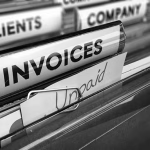Personal bankruptcy can significantly affect creditors, who often face the loss of expected payments and complex legal processes. This article explores the effects of personal bankruptcy on creditors, from the initial filing to the discharge of debts, offering insights into the processes involved and strategies for creditors to mitigate losses.
Understanding Personal Bankruptcy
Personal bankruptcy is a legal process that allows individuals overwhelmed by debt to have a fresh start. In the UK, individuals can file for bankruptcy under the Insolvency Act 1986. When a person declares bankruptcy, their assets are evaluated and may be used to repay creditors. Once the bankruptcy is complete, most of the person’s debts are discharged, meaning they are no longer legally required to pay them.
Initial Impact on Creditors
When a debtor files for bankruptcy, creditors are impacted immediately. The debtor’s financial obligations to creditors are effectively frozen. This means creditors cannot take further action to collect debts, including initiating or continuing any legal proceedings. This automatic stay can be frustrating for creditors as it halts any ongoing collection efforts and may lead to uncertainty about the recovery of owed funds.
The Role of the Trustee
Once bankruptcy is declared, a trustee is appointed to manage the debtor’s estate. The trustee’s role is to gather and sell the debtor’s assets and distribute the proceeds to creditors. Creditors must file claims with the trustee to be considered for repayment. The trustee evaluates these claims and determines the priority of payments based on the type of debt and the available assets.
Priority of Claims
Not all creditors are treated equally in bankruptcy proceedings. The Insolvency Act outlines a hierarchy of claims, prioritising certain debts over others. Secured creditors with a legal right to specific assets as collateral are generally paid first. Unsecured creditors who do not have specific assets backing their claims are lower in the hierarchy. This means that, in many cases, unsecured creditors receive only a fraction of what they are owed, if anything at all.
Secured vs Unsecured Creditors
Secured creditors have a significant advantage in bankruptcy proceedings due to their legal claim to specific assets. For example, a mortgage lender can claim the proceeds from the sale of a property. If the sale does not cover the entire debt, the remaining amount becomes an unsecured debt. Unsecured creditors, such as credit card companies and personal loan providers, often face greater losses as they rely on the debtor’s general assets for repayment, which are typically insufficient to cover all claims.
Distribution of Assets
The trustee’s role includes distributing the debtor’s assets to creditors. This process can be lengthy and complex, often involving the sale of properties, vehicles, and other valuable items. Creditors receive payments based on the priority of their claims and the availability of funds. In many cases, the amounts recovered are significantly less than the original debt, particularly for unsecured creditors. This distribution process highlights the financial risks creditors face when debtors declare bankruptcy.
Debt Discharge and Its Consequences
Once the bankruptcy process is complete, the debtor is discharged from most of their debts. This discharge means creditors can no longer pursue the debtor for the remaining amounts. While this provides a fresh start for the debtor, it often results in creditors incurring financial losses. Understanding the implications of debt discharge is essential for creditors to manage their expectations and explore alternative recovery strategies.
Legal and Administrative Costs
Bankruptcy proceedings involve various legal and administrative costs, typically deducted from the debtor’s estate before any distribution to creditors. These costs can further reduce the funds available for repayment, exacerbating the financial impact on creditors. Engaging with insolvency practitioners and legal experts can help creditors navigate these complexities and potentially minimise additional costs.
Reporting Requirements and Information Sharing
Creditors must comply with specific reporting requirements during bankruptcy proceedings. They need to submit detailed claims, provide supporting documentation, and communicate with the trustee. This process requires time and resources, adding to the overall burden on creditors. Efficient information sharing and adherence to reporting requirements can facilitate smoother proceedings and improve the chances of recovering some of the owed funds.
Strategies for Creditors to Mitigate Losses
While personal bankruptcy can result in significant financial losses for creditors, there are strategies to mitigate these impacts:
- Before extending credit, conduct thorough assessments of potential borrowers’ financial health and creditworthiness. This can help identify high-risk individuals and avoid lending to those likely to default.
- Spread the risk by diversifying the types of loans and credit products offered. This can help reduce the overall impact of any single bankruptcy case.
- Where possible, secure loans with collateral to improve the chances of recovery in the event of bankruptcy. Secured creditors have a higher priority in claims and are more likely to recover their funds.
- Continuously monitor the financial status of borrowers to identify early signs of distress. Early intervention can sometimes prevent the escalation of financial problems and reduce the likelihood of bankruptcy.
- Work with insolvency practitioners and legal experts to navigate the complexities of bankruptcy proceedings. Professional guidance can help optimise recovery and manage legal and administrative costs effectively.
- Consider alternative dispute resolution methods, such as negotiation or mediation, to reach settlements with debtors before they declare bankruptcy. This can sometimes result in better outcomes for creditors.
The Broader Economic Impact
Personal bankruptcy not only affects individual creditors but can also have broader economic implications. Many bankruptcies can impact the financial stability of lending institutions and other creditors, potentially leading to tighter credit markets. Understanding these broader impacts underscores the importance of effective risk management and proactive measures to mitigate the effects of personal bankruptcy.
Wrapping up
Personal bankruptcy presents significant challenges for creditors, including halted collection efforts, complex legal processes, and financial losses. By understanding the impacts of bankruptcy and implementing strategies to mitigate these effects, creditors can better manage the risks associated with lending. Thorough credit assessments, risk diversification, securing loans with collateral, and engaging professionals are essential steps in navigating the complexities of bankruptcy. While the process can be daunting, proactive measures and informed decision-making can help creditors minimise losses and maintain financial stability. To find out more about how Debt-Claims Solicitors can assist your business, contact us today or call us on 02475 461 042.


